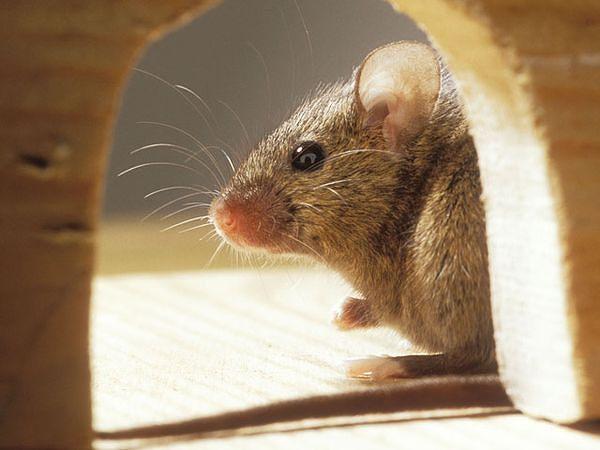1017
A very interesting experiment of John Calhoun

(Check the accuracy of the experiment yourself)
American scientist ethologist John Calhoun has held a number of fascinating experiments in the 60-70 years of the twentieth century. As an experimental D. Calhoun invariably chose rodents, although the ultimate goal of the research was always a prediction for the future of human society. As a result of numerous experiments on the rodent colonies Calhoun has formulated a new term, "behavioral sink» (behavioral sink), indicating the transition to a destructive and deviant behavior in terms of overpopulation and overcrowding. His research John Calhoun has acquired a certain fame in the 60s, as many people in the Western countries that have experienced post-war baby boom, began to think about how overpopulation affect public institutions and for each person in particular.
His most famous experiment that made us think about the future of a whole generation, he held in 1972 in conjunction with the National Institute of Mental Health (NIMH). The aim of the experiment "Universe-25" was to analyze the effect of population density on the behavioral patterns of the rodents. Calhoun built a haven for mice in the laboratory. It was created a tank size of two by two meters and a height of half a meter, where guinea could not get out. Inside the tank to maintain a constant comfortable temperature for mice (+20 ° C), present in abundant food and water, created numerous nests for the females. Each week the tank was cleaned and maintained in a constant state of cleanliness, all necessary safety measures have been taken: eliminates the appearance of predators in the tank or the occurrence of massive infections. The experimental mice were under the constant supervision of veterinarians, their health status is constantly monitored. food and water security system was so thought out that the 9500 mice could eat at the same time without experiencing any discomfort, and 6144 mice consume water, and without experiencing any problems. Space for mice was more than enough, the first problem of the lack of shelter can only occur when a population size of over 3840 individuals. However, such a large number of mice had not been in the tank, the maximum size of the population observed at the level of 2200 mice.
The experiment started with a moment of space inside the tank four pairs of healthy mice, which took quite a bit of time to get used to, to realize in what a mouse tale they were, and begin to multiply rapidly. The period of development of Calhoun called phase A, but since the birth of the first Young began the second stage B. This is the stage of exponential growth of the population size in the tank under ideal conditions, the number of mice doubling every 55 days. Starting with the 315 days of the experiment, the population growth rate has slowed down significantly, and now the number has doubled every 145 days, which marked the entry into the third phase C. At this point in the tank were about 600 mice formed a hierarchy and some social life. It has become physically less space than previously.
There was a category of "outcasts" who were being driven in the center of the tank, they often become victims of aggression. To distinguish a group of "outcasts" could be bitten by the tails, tear hair and traces of blood in the body. Les Miserables consisted mainly of young individuals, who did not find for themselves the role of the social hierarchy in the mouse. The lack of appropriate social roles has been caused by the fact that under ideal conditions the mouse tank lived long aging mice did not make room for the young rodents. So often aggression was aimed at a new generation of individuals born in the tank. After the expulsion of the males broke psychologically, they showed less aggression, did not want to protect their pregnant females and perform any social role. Although they occasionally attacked any other individuals from the community "rejected" or on any other mice.
Females who are preparing for the birth, became more and more nervous as a result of the growth of passivity among the males, they become more vulnerable to random attacks. As a result, the female began to show aggression and often fight, protecting offspring. However, the aggression was not, paradoxically, is directed only at others, not less aggressiveness manifested itself in relation to their children. females often kill their cubs and moved to the top slot, hermits became aggressive and refused to reproduction. As a result, the birth rate has dropped substantially, and young mortality reached significant levels.
Soon began the last stage of the existence of the murine paradise - D phase or phase of death, as it is called John Calhoun. The symbol of this stage is the emergence of a new category of mice, called "beautiful." These include males, showing uncharacteristic kind of behavior, refusing to fight and fight for females and territory, shows no desire to mate, are prone to a passive lifestyle. "Beautiful" only we ate, drank, slept, and purified their skins, avoiding conflicts and the implementation of any social functions. This name they received because unlike most of the other inhabitants of the tank on their body was no trace of hard-fought battles, scars and tear wool, their narcissism, and narcissism have become legendary. Also, the researcher was struck by the lack of desire to have "beautiful" to mate and breed among the recent wave of births in the tank "beautiful" and female single who refuse to breed and escaping into the upper tank nest became a majority.
The average age of mice in the latter stage of the existence of paradise mouse was 776 days, 200 days exceeds the upper limit of reproductive age. young animals mortality was 100%, the number of pregnancies was low, and soon was 0. mouse Endangered practiced homosexuality deviant and inexplicably aggressive behavior in excess of vital resources. Cannibalism flourished while plentiful food, females refused to bring up cubs and killed them. The mice rapidly died out in 1780 on the day after the start of the experiment died last occupant
«mouse paradise." In anticipation of such a catastrophe, D. Calhoun with the help of Dr. H. Marden colleagues conducted a series of experiments in the third stage of death phase. several small groups of mice were removed from the tank and moved to an equally ideal conditions, but also under conditions of minimal population and unlimited space. No overcrowding and intraspecific aggression. In fact, the "beautiful" and female lone were recreated the conditions under which the first 4 pairs of mice in the tank exponentially multiplied and created a social structure. But to the surprise of the scientists, "beautiful" and female single his behavior did not change, they refused to mate, reproduce and perform social functions associated with reproduction. As a result, there was no new pregnancies and the mouse died of old age. These same results were observed in all groups of displaced. As a result, all experimental mice died while under ideal conditions.
John Calhoun created by the experiment results of the theory of the two deaths. "First death" - is the death of the spirit. When newborn individuals did not find a place in the social hierarchy "mouse paradise," that there has been a lack of social roles in ideal conditions, with unlimited resources, there was an open confrontation between adults and young rodents, increased the level of unwarranted aggression. The growing size of the population, an increase in congestion, increased physical contact, all of this, according to Calhoun, led to the emergence of individuals capable of only simple behavior. Under the conditions of the ideal world, the security, the abundance of food and water, the absence of predators, most individuals only ate, drank, slept, took care of him. Mouse - a simple animal, for him the most complex behavior - is the process of courting the female, reproduction and care of offspring, protection of the territory and the young, participate in the hierarchical social groups. From all of the above broken psychologically abandoned mouse. Calhoun calls a similar rejection of the complex "first death" behavior patterns or "the death of the spirit." After the first occurrence of death, physical death ( "second death" on Calhoun's terminology) is inevitable and is a matter of short time. As a result of the "first death" a considerable part of population of the entire colony is doomed to extinction, even in a "paradise".
Once Calhoun asked about the reasons for the emergence of a group of rodents "beautiful". Calhoun drew a direct analogy with the man, explaining that the key human trait, his natural destiny - is to live in the conditions of pressure, tension and stress. Mice, give up the struggle, choosing an unbearable lightness of being turned into autistic "handsome", capable of only the most basic function, the absorption of food and sleep. From the complex and demanding "handsome" voltage abandoned and, in principle, become not capable of such powerful and complex behavior. Calhoun draws parallels with many modern men, capable of only the most routine, everyday activities in order to maintain the physiological life, but the spirit was dead already. What is expressed in the loss of creativity, the ability to overcome and most importantly, to be under pressure. Refusal to accept numerous calls an escape from stresses of life full of struggle and overcoming - a "first death" by John Calhoun, or the death of the spirit of the terminology behind which inevitably comes the second death, this time the body
. Perhaps you still have questions, why the experiment D. Calhoun called "Universe-25"? It was the twenty-fifth attempt of the scientist to create a haven for mice and resulted in the death of all the previous all experimental rodent ...























